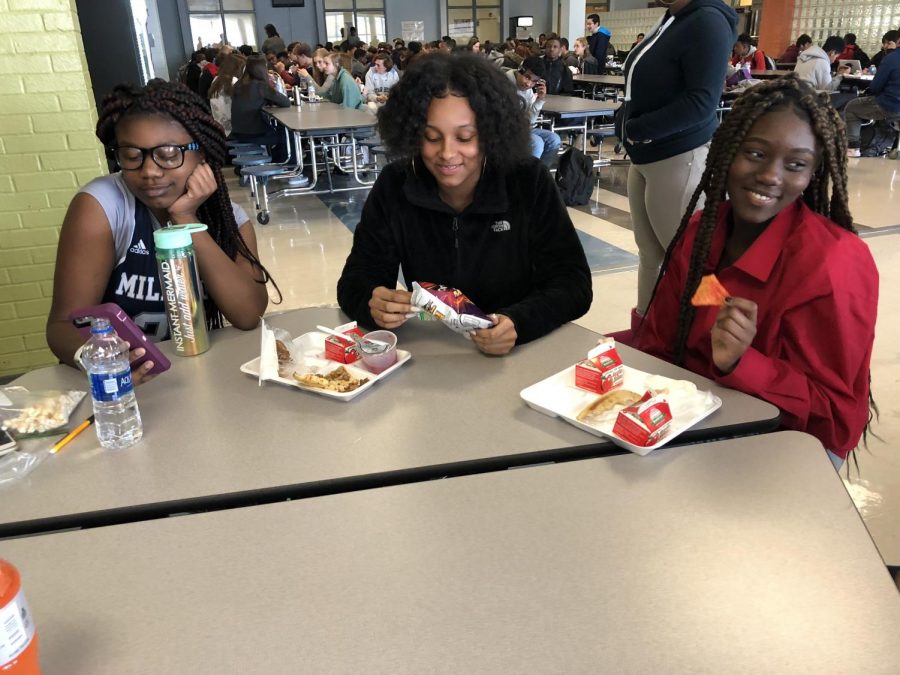The shocking truth about the nutritional value of school lunches
Trying to eat nutritious lunches in the cafeteria, students TreShure Williams, Aaliyah Maye and Yasmine Kapini eat pizza and fruit to try to maintain a healthy balance of the food groups. March is National Nutrition Month, and it is important to know how to make healthy choices when eating lunch on and off campus.
March 19, 2018
With the start of spring comes many movements to encourage people to get active and achieve better eating habits to get people out of their winter slump. March is National Nutrition Month, which is a national nutrition education and information campaign created by the Academy of Nutrition and Dietetics. The campaign helps bring awareness to the importance of making healthy eating habits and improving physical activity. This year’s theme is “going further with food,” which is important to help inform people how many calories, vitamins, and minerals people are supposed to eat every day.
The average adult male should eat approximately 2,500 calories a day, while females should eat approximately 2,000, but these numbers vary depending on age, height, weight and type of lifestyle. One issue with today’s generation is people spending most of their daily calorie intake on one meal. At Millbrook, many students spend most of their daily calories at lunch and do not even notice.
Students who buy meals in the cafeteria have many different choices when it comes to purchasing food. In the cafeteria students can buy pizza, fried chicken sandwiches, cheeseburgers, tater tots, and many more items. The problem is people do not realize how many calories and fat are in some of these options. Some healthier items to get during lunch can be black beans, mixed vegetables, grilled chicken, fruit, or anything that is low in fat and sugar. “I think cafeteria food is mostly healthy, but students choose to eat unhealthy items because they are more appealing than the healthier choices, and they know they will taste better,” said freshman Sydney Hartis.
Juniors and seniors who go off campus for lunch may be tempted by all the delicious fast food choices close to Millbrook, but it is important to make wise choices when eating off campus. One of the most popular off campus lunch choices is Cook Out because of its close distance and its cheap trays. A common tray can have from 700 calories to 1,600 calories depending on your choices, which uses up approximately half the recommended daily calorie intake in one meal. Other fast food places such as Chick-fil-a, PDQ, and Sheetz can be much worse depending on what you get. With the calories, sugar, fat, and carbs eaten daily during off-campus lunch it is important to make wise choices to stay healthy. Some healthier alternatives for off campus lunch are getting grilled food instead of fried, refraining from french fries, drinking less soda, and eating fruits and vegetables that are better for your health. Also eating at healthier restaurants like Tropical Smoothie Cafe, Taza Grill, and Jersey Mikes can help cut down daily intake of fat, carbs, and sugars.
Since March is National Nutrition Month, it is important to practice healthy eating habits, especially when it comes to lunch at school and off-campus. Another option is bringing lunch from home so you can monitor your calorie and fat intake. “I bring healthy snacks from home to eat at lunch because eating healthy lunches at school can be difficult when trying to keep your fat and calorie intake down,“ said sophomore Amelia Shea. This month make sure to practice healthy eating habits to celebrate National Nutrition Month when eating on campus and off-campus for lunches.












